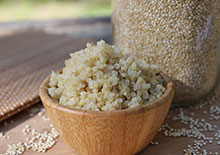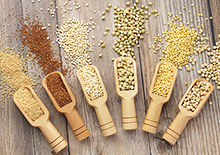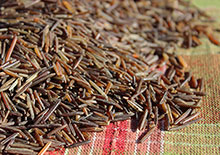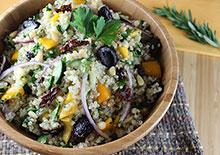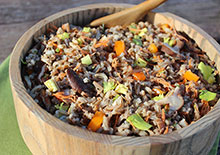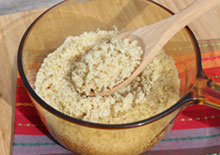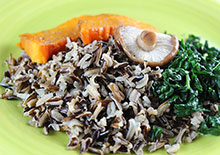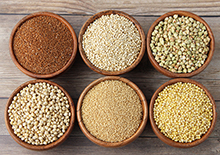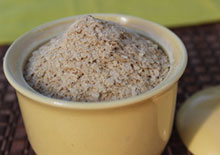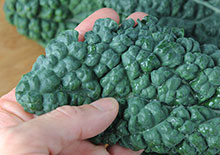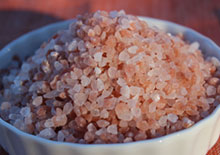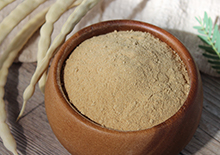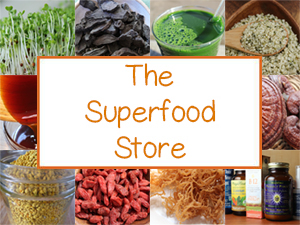- Home
- Plant-Based Cooking
- Coconut Flour Flatbread
Easy Keto Coconut Flour Flatbread Recipe Using Psyllium
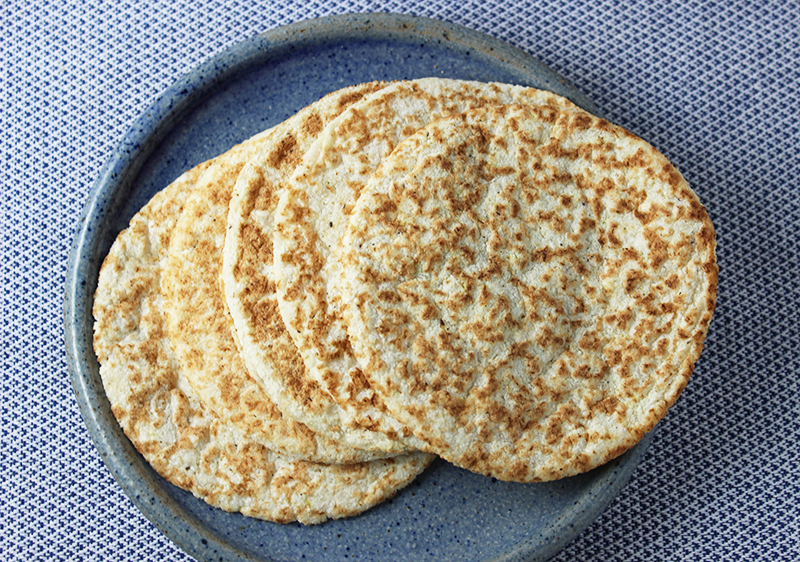
Coconut flour flatbread is a gluten-free and keto-friendly alternative to other types of flatbreads made with grains.
If you do a quick online search for "flatbreads", it doesn't take very long to realize that there are literally hundreds of different kinds of flatbread recipes around the world utilizing many different types of grain varieties.
The use of straight coconut flour as the main flatbread ingredient is a relatively modern recipe invention.
The main reasons it makes a great substitute is because:
1) It is grain and gluten-free.
2) It is a ketogenic food; high in fiber, low in carbs, high in healthy fats.
3) It is nut-free, for those with nut allergies.
We also don't use eggs, dairy or tapioca-like other coconut flour-based flatbread, making this a vegan and low-calorie alternative.
If you're not necessarily a coconut lover, this flatbread recipe can also be made with gluten-free grain flour as well as almond flour.
This flatbread can be used just like chapati, naan, or tortillas for wrapping up foods or used as a bread-like condiment to meals.
The version on this page requires brief stove-top heat preparation, but it is also possible to make a dehydrated coconut wrap using just coconut
flour, water, and coconut oil. At some point, we'll also share that recipe.
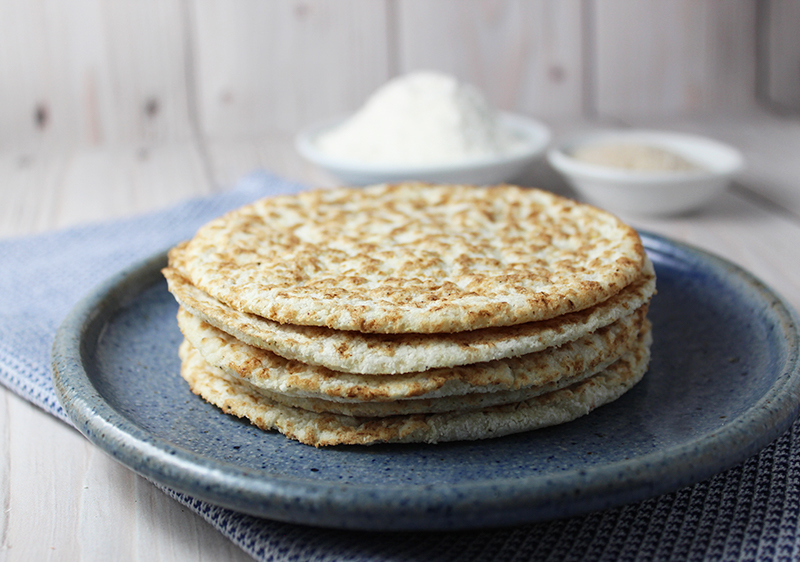
What is Coconut Flour Exactly?
Coconut flour flatbread has a mild coconut flavor as it’s made directly from dried coconut meat.
This is a process that involves scraping out the white coconut flesh, rinsing it, grating it and then straining to separate the solid material. Most coconut flour products low-temp bake the coconut before grinding it into a fine powder. This makes a consistency close to a grain-based flour.
We notice that some brands actually market their flour as a "raw" product, claiming that special intent was made to not expose the coconut to high heat.
Coconut flour is available these days from online suppliers or occasionally in supermarkets.
Making Your Own Coconut Flour
Can you make your own coconut flour? Coconut flour made from dried coconut is very hard to grind down into a fine texture suitable as a flour substitute.
Most homemade coconut flour is made by using the pulp leftover after making coconut milk, which strains out the milk solids. From our experience, this pulp material is very fibrous and is the easiest to grind into a fine usable powder or flour, after it has been dried or baked.
To make the flour, however, you will need a high-speed blender. Or, a flour mill works well too!

Using Psyllium in This Coconut Flour Flatbread
This coconut flour flatbread has a wonderfully soft flexible texture that makes it easy to wrap up foods without falling apart. This characteristic is the result of the psyllium husk, a common ingredient often utilized in gluten-free keto baking because it produces a gluten-like texture.
It essentially helps to bind the coconut flour dough, making it more elastic and stretchable and, after heating, creates a bread-like quality.
In some research, psyllium was shown to improved gluten-free bread development due in part to its water-binding capacity.
It is used by those adhering to ketogenic protocol because its carbohydrate content comes exclusively from non-digestible fiber, not from starch or sugars.
We use whole psyllium husks as opposed to the powder. If you do happen to use the powder instead, keep in mind you will need to include about half the amount.
Coconut Flour Flatbread Recipe
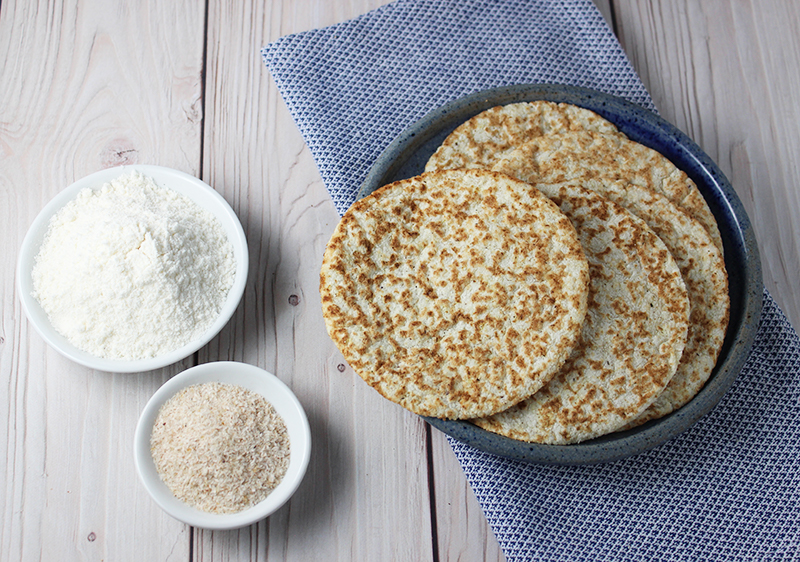
We include two versions of this recipe. One is for making smaller size flatbread and the other is for larger ones. Each recipe will make approximately five to six coconut flour flatbreads, depending on how thick you like them.
Ingredients:
5" Diameter Flatbread
- 1/2C coconut flour
- 2T psyllium husk
- 1T coconut oil (melted)
- 1/4t baking soda
- 1/4t salt
- 1C warm filtered water
10" Diameter Flatbread
- 1C coconut flour
- 4T psyllium husk
- 2T coconut oil (melted)
- 1/2t baking soda
- 1/2t salt
- 2C warm filtered water
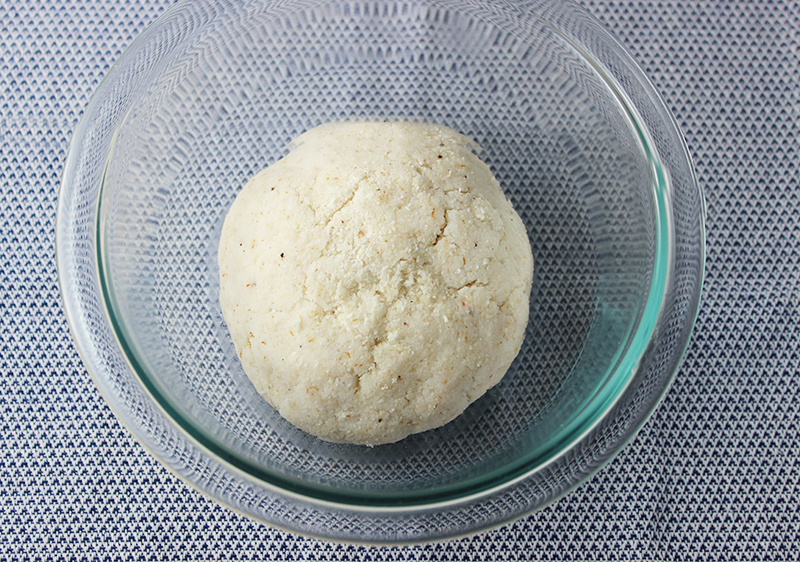
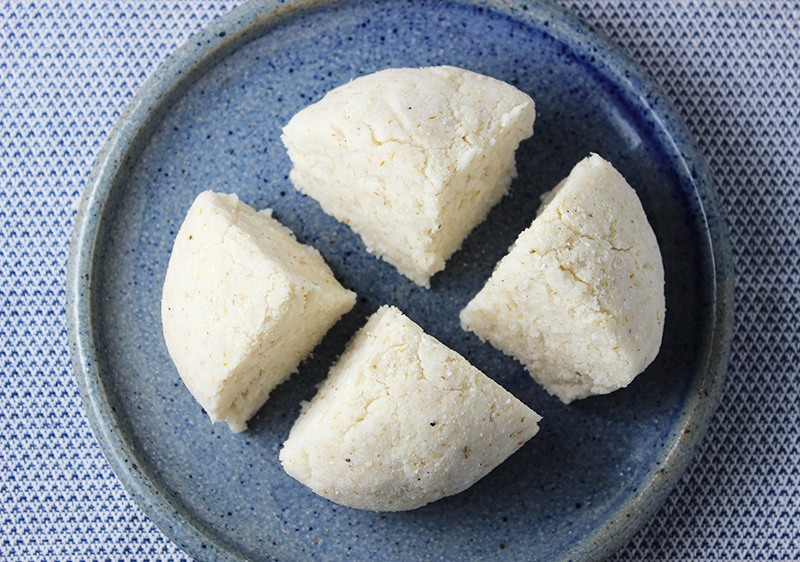
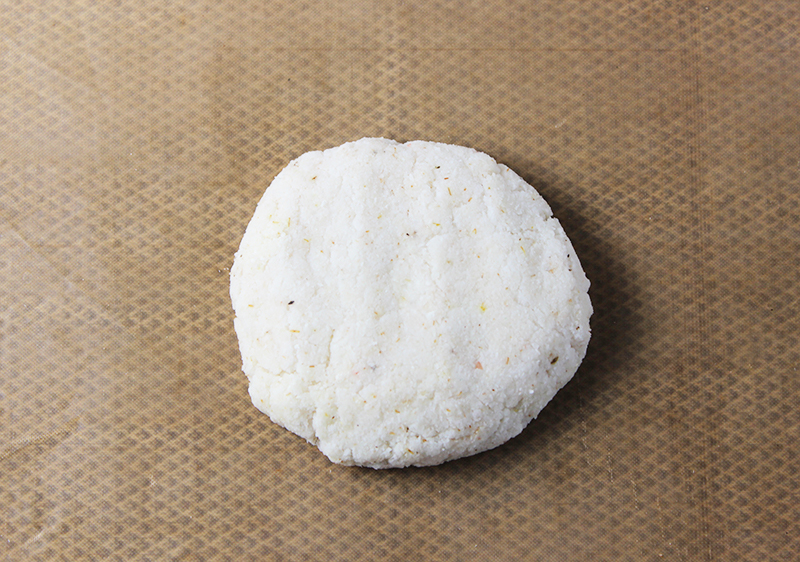
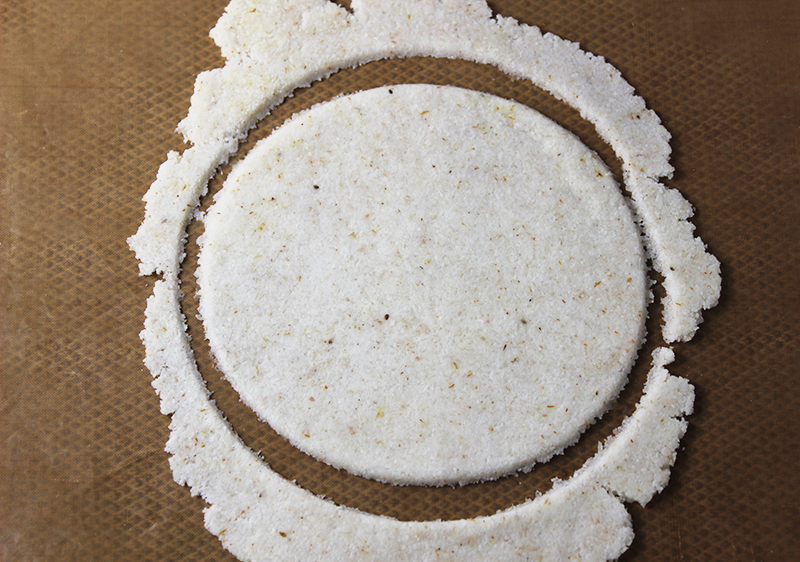
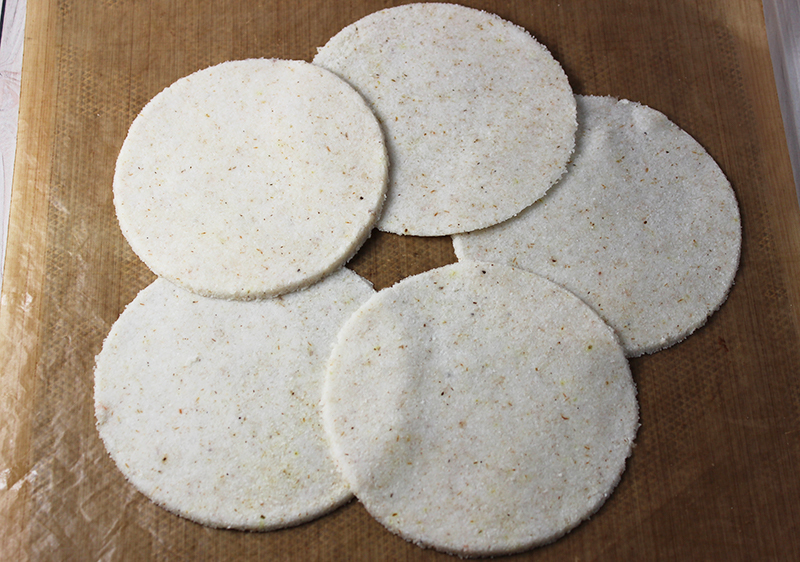
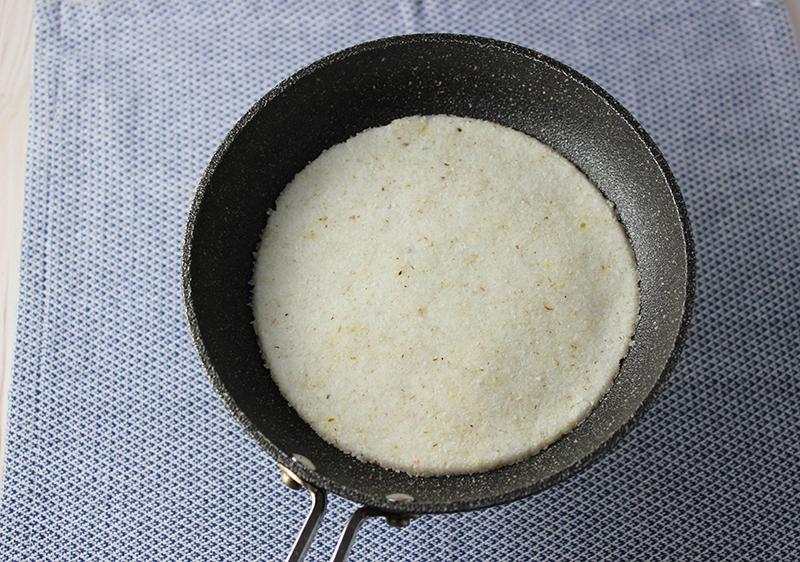
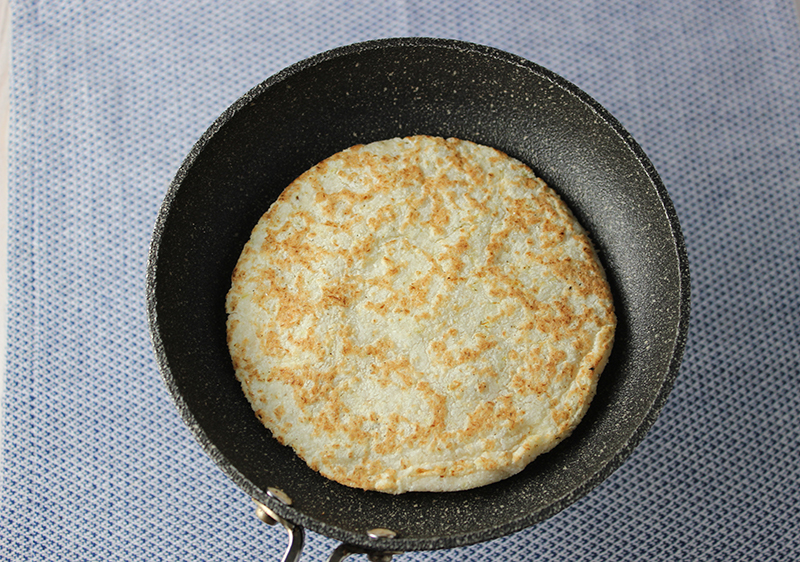

Directions:
- Place dry ingredients in a bowl and mix together.
- Add melted coconut oil and warm water.
- With a fork, mix the wet and dry ingredients until a dough is formed.
- Need with your hands a bit to incorporate ingredients.
- Form into a ball and cover with a cloth and allow to sit for 10 minutes.
- Cut the ball into 4 even segments.
- On a piece of parchment paper or non-stick dehydrator sheet, roll your flatbread dough and flatten into a disk shape.
- Take another piece of parchment or non-stick sheet and lay it over the top.
- Now take a rolling pin and roll out your dough about 1/16"-1/8" thick.
- Find a disk-shaped object (like a bowl) that is 5" or 10" in diameter.
- Peel off top parchment layer and place the bowl over the top of your rolled-out dough and use it to cut out your flatbread shape.
- Remove the outer scraps and set aside.
- Repeat for the three remaining flatbread dough pieces.
- Create your last one or two flatbread disks using the scraps from the previous.
- At this point, you should have about 5 to 6 flatbreads (depending on thickness) and they are now ready to be heat prepared.
To Heat The Flatbread:
- Using a paper towel, coat a non-toxic non-stick skillet with coconut oil, so there is no excess oil in the pan.
- Heat the skillet for a moment on medium heat, then add your flatbread disk.
- Wait about 2 minutes then flip over for another minute or two.
- You will notice the bread will brown and puff up slightly.
- Remove it from the heat source and repeat for the remaining disks.
You can use these flatbreads immediately or store them in a container in the fridge for later use. They also hold up very well when frozen and thaw nicely, retaining their flexible texture.
You might want to include other herbs and spices in this basic recipe at some point. We personally don't like a lot of spice as they are often served with flavorful foods.
Our Favorite Herbs and Spices to Include:
- Turmeric
- Rosemary
- Garlic
- Paprika
- Moringa
- Chipotle
- Curry
- Celery Seed
- Dandelion Greens
- Cilantro
Coconut flour flatbread can be served as a condiment to meals or used as a food wrap, like tortillas. We sometimes use them as a type of soft crust when making mini-type pizzas or for spreading nut pates, seed cheese, or hummus.
